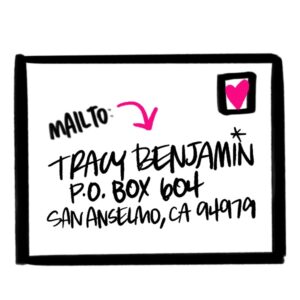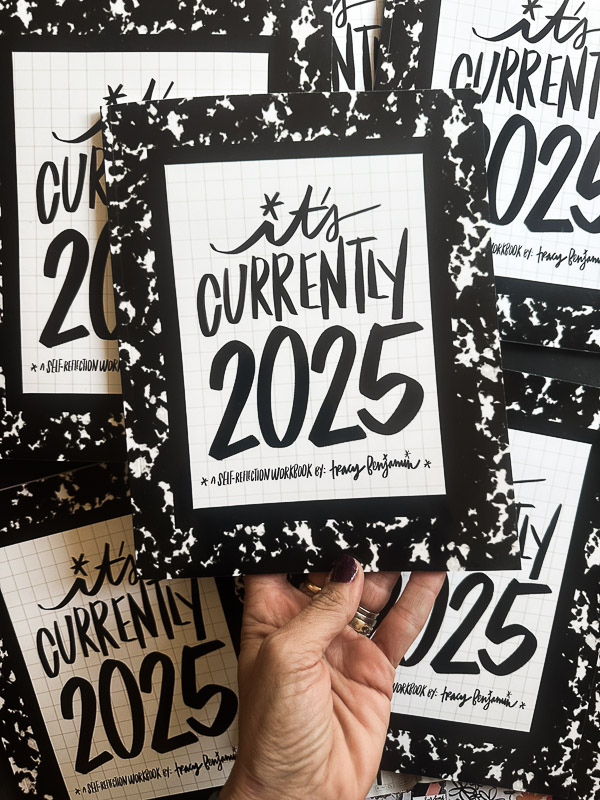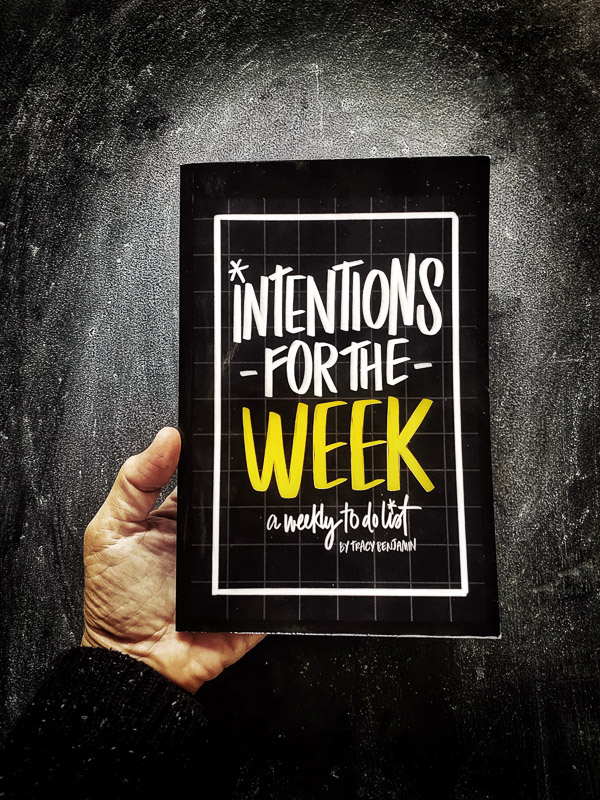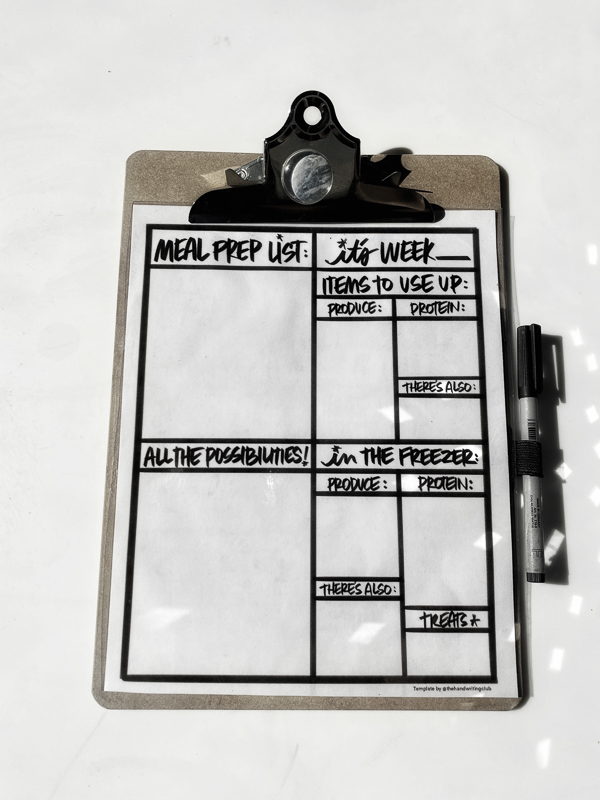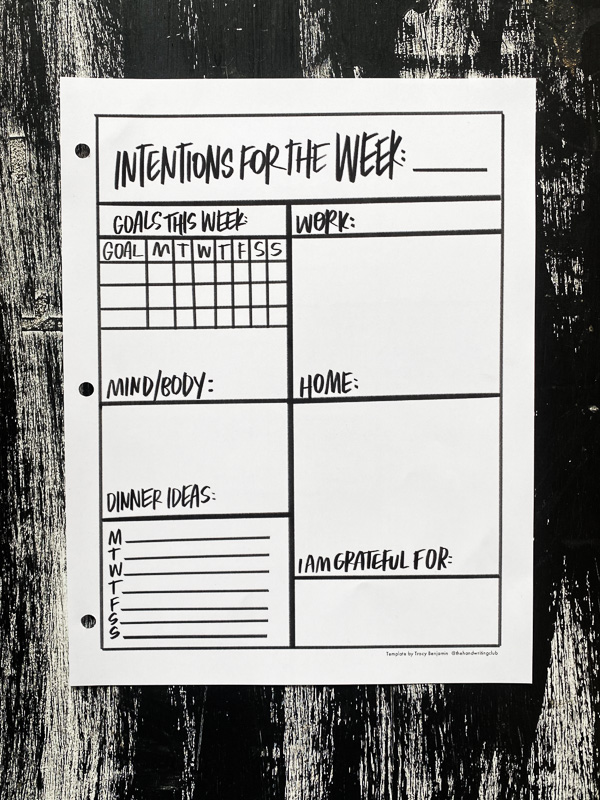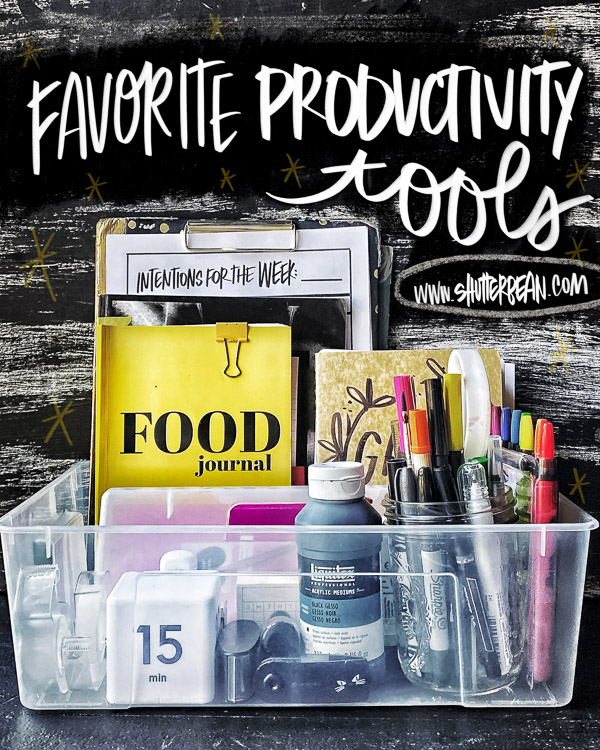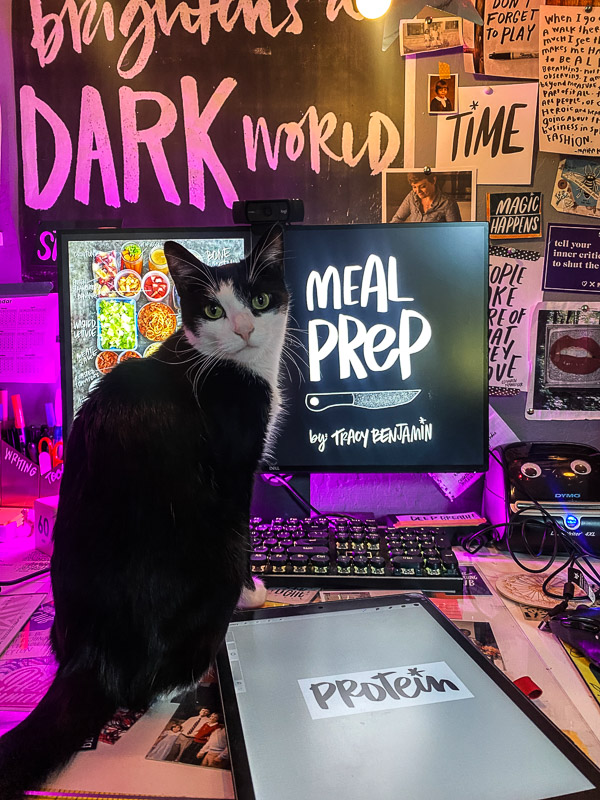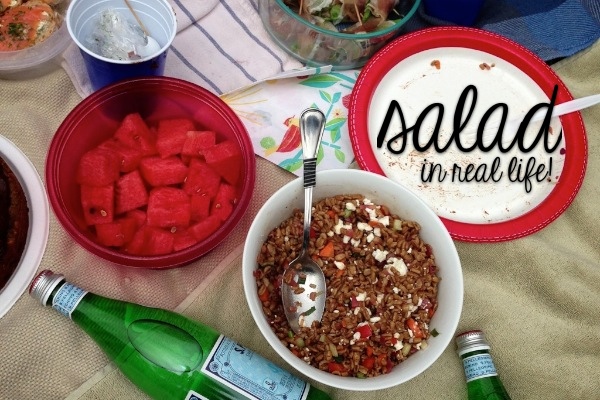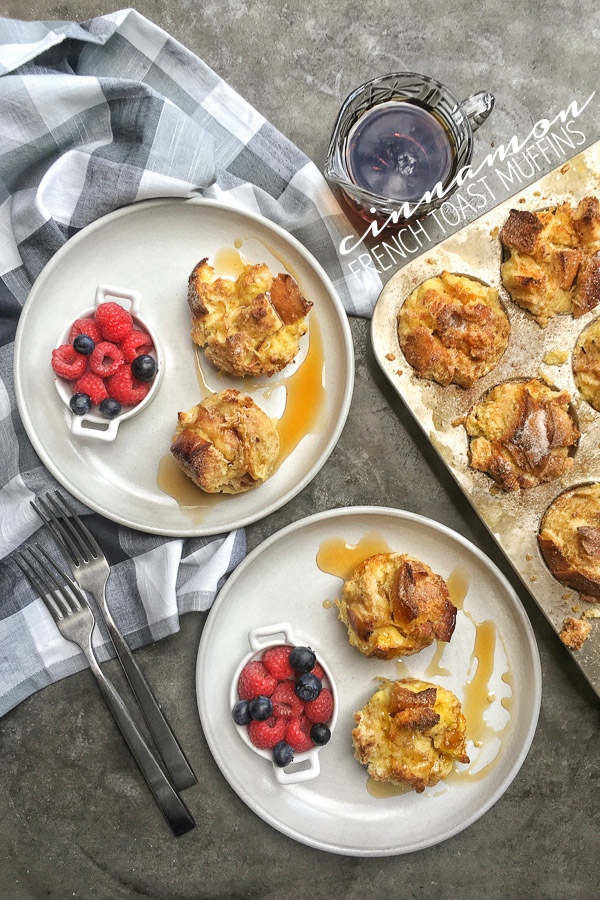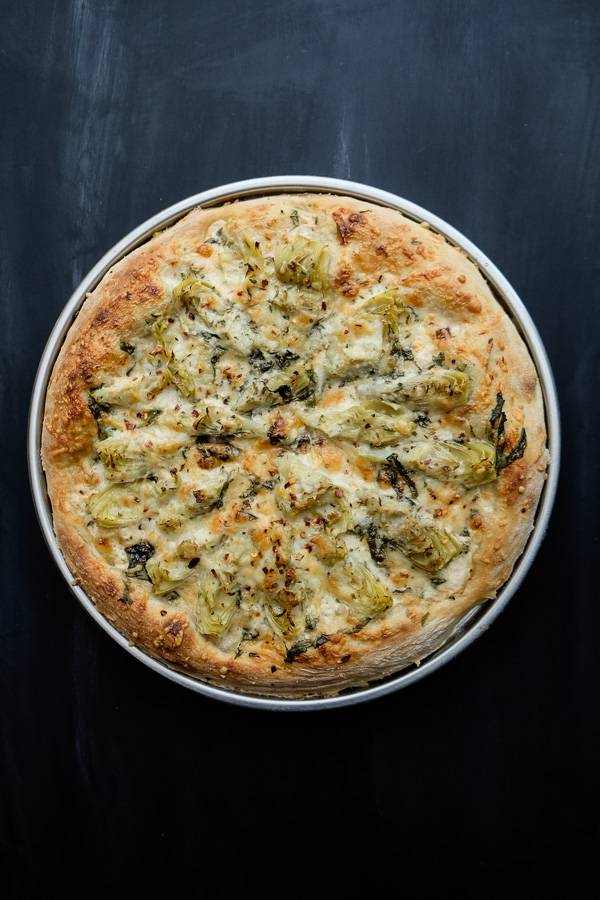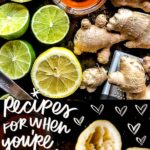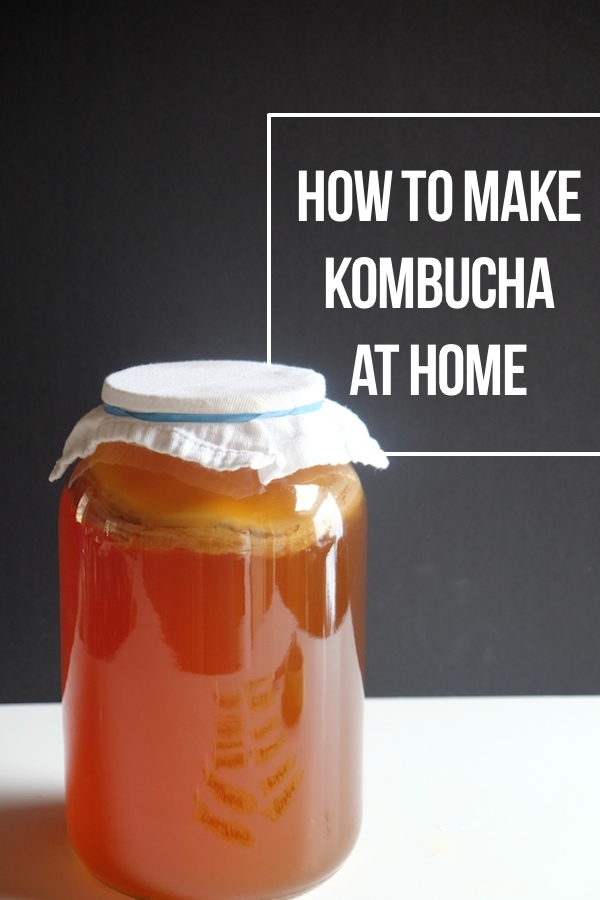
New post: How to Make Kombucha At Home
I started brewing my own kombucha a few months ago and was instantly hooked. Considering that a bottle of kombucha goes for about $4 in my hometown, I’ve saved quite a few dollars and I’ve been able to enjoy a bottle of kombucha almost every single day of the week. A lot of readers have asked how I do it, so I thought I’d show you! I’m by no means an expert, but I’d like to show you how easy it is and how you shouldn’t be intimidated by the process.
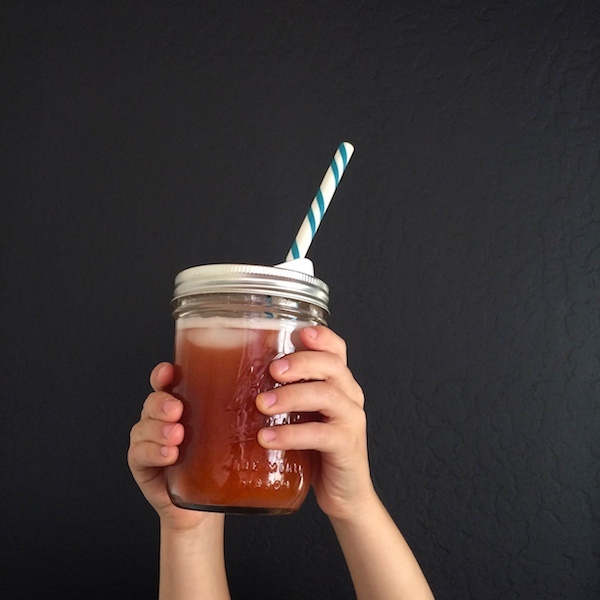
With the continual brewing cycle system, I brew my kombucha every Wednesday. Each brew yields 6-7 bottles depending how much juice I add in the batch. Pretty cool, huh?
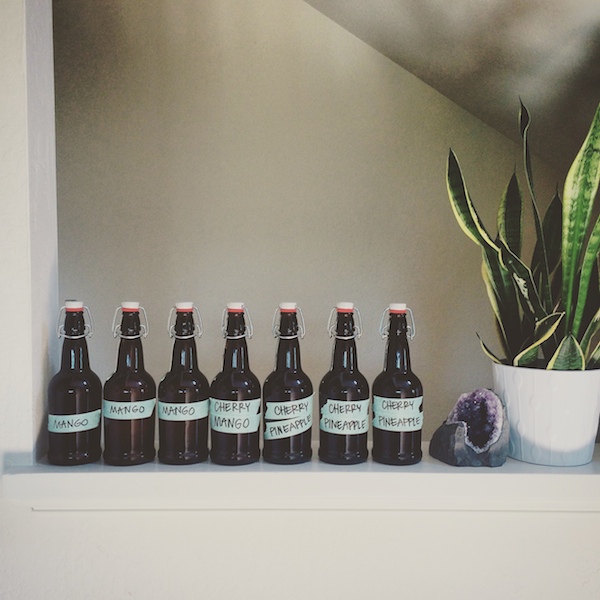
Let’s check out the brewing process first!

Because I was feeling overwhelmed with all of the supplies and research, I ordered this Kombucha Starter Kit from Amazon. I highly recommend it if you’re not sure what items you need. I’ve added another brew jar to my collection because I eventually want to brew more that one batch per week. In the meantime, it’s nice to have an extra gallon glass brew jar cleaned and ready to go for my next batch. What I like about this kit is that it includes a jar, a scoby, tea, sugar, pH level strips, cheesecloth + rubber band, a straw and a sticker thermometer that goes on the side of the jar. All of the essentials to get you brewing in no time. After that, you’ll only need to have sugar and tea bags on hand for each brew cycle.
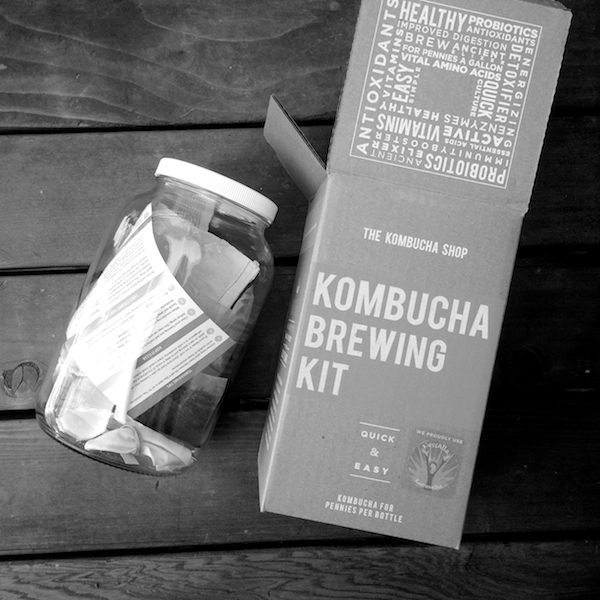
Speaking of essentials, let me show you what’s involved.
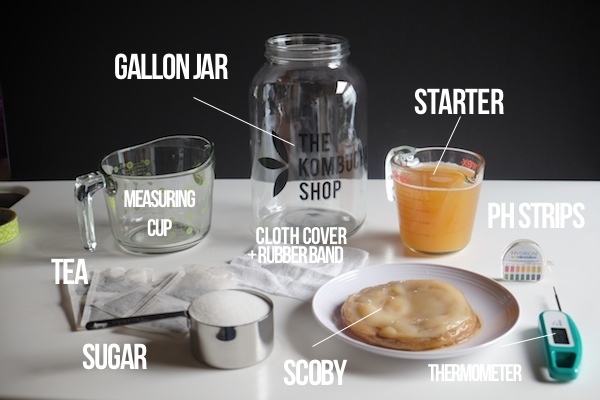
SCOBY!! What’s a scoby, you ask? A scoby is “A symbiotic colony of bacteria and yeast, or SCOBY is a commercial and popular (rather than scientific) term used to refer to mixed cultures of bacteria and yeast present during production of the fermented beverages such as kefir and kombucha.” – wikipedia
Don’t be afraid. It’s not going to hurt you. It’s actually pretty fascinating stuff.
Casey was worried that our kitchen would smell like kombucha but it doesn’t! No smell at all.
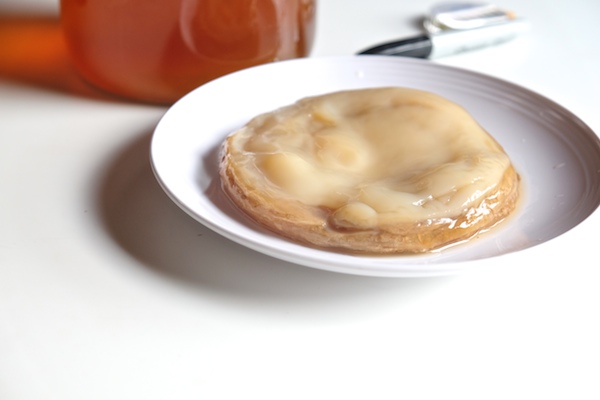
While most recipes say to brew tea in a pot of boiling water, I’ve found it easier to boil water in our electric tea kettle. I pour the boiling water it into a large measuring cup for the sweet tea brewing process. There’s sugar in the mix. It feels like less cleanup to me.
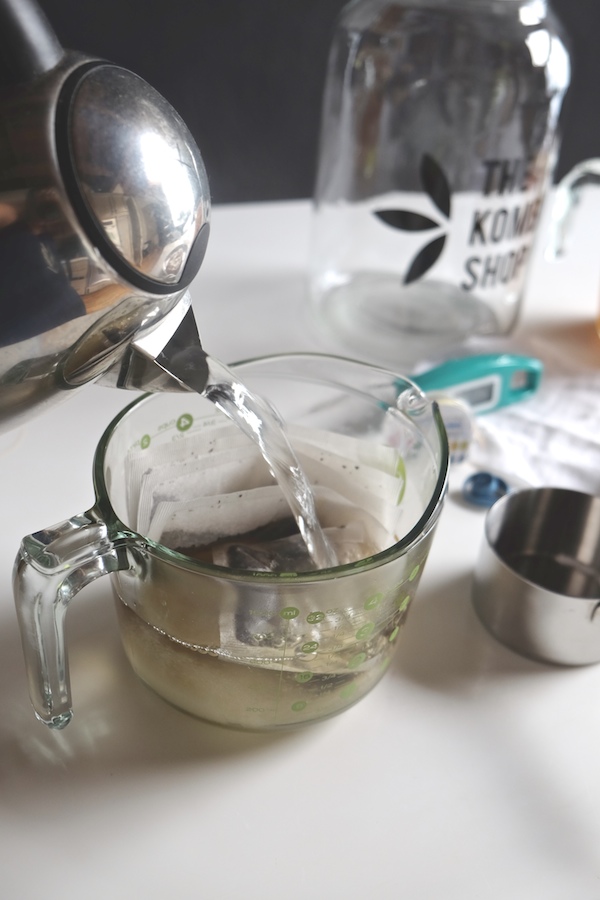
Look at that! We have sweet tea. One cup of sugar seems like a lot, but we’re giving the yeast something to eat. I’ve read that most of the sugar gets eaten, so your final kombucha has a lot less sugar.
Anywho! Make sure the sugar is completely dissolved.
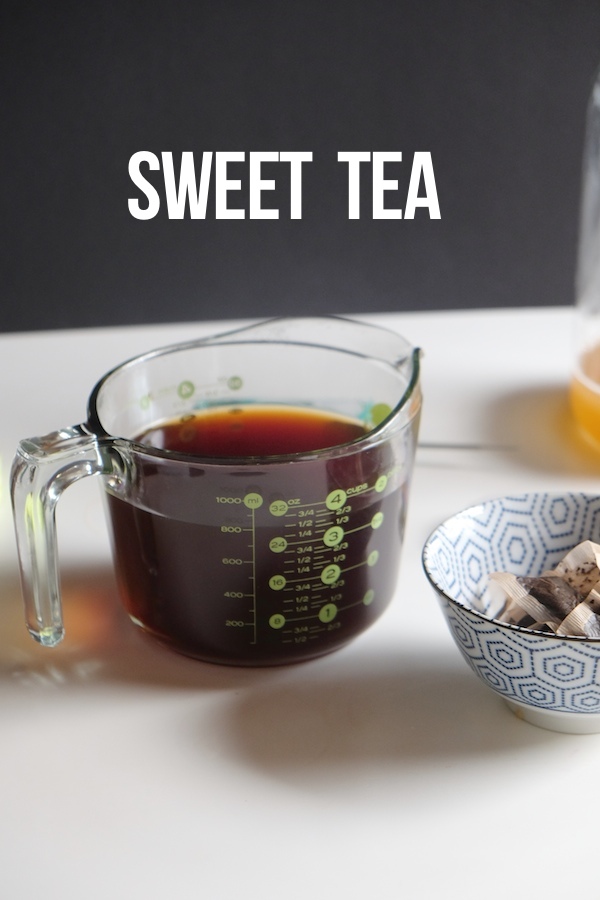
Let’s put the kombucha starter into our 1 gallon glass brew jar. Sometimes I add this last sometimes I do it at the beginning. It’s all going in the same place. I do this so I can easily clean up as I go.
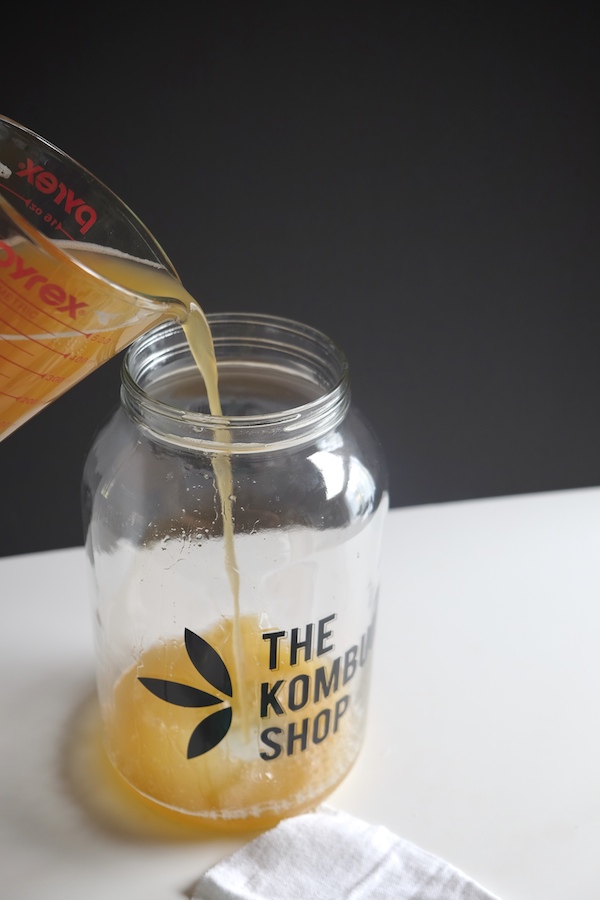
Now that we have added in the tea and filtered water to the kombucha starter, we give it a good stir.
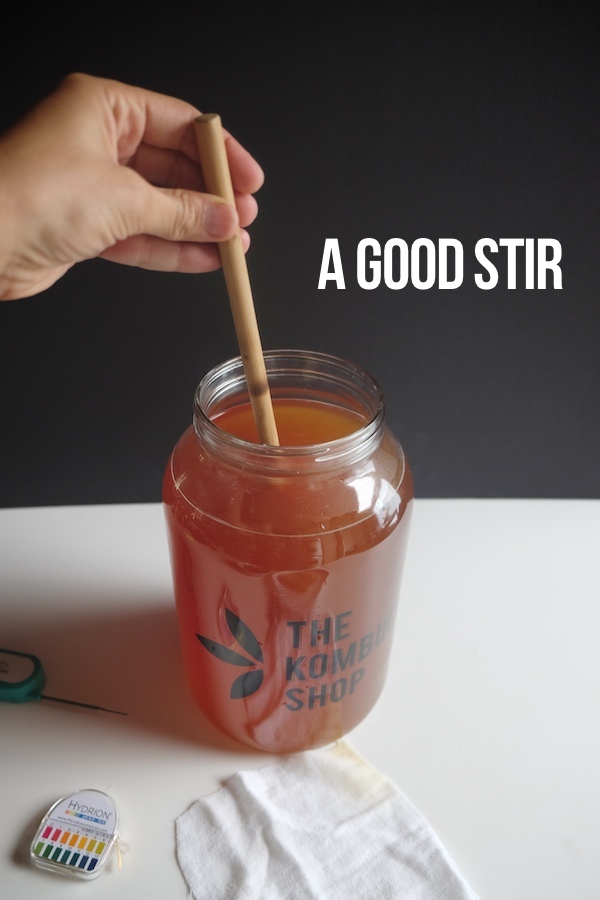
Temperature range should be between 68-88F. I find that throwing a few ice cubes in the brew will help lower the temperature.
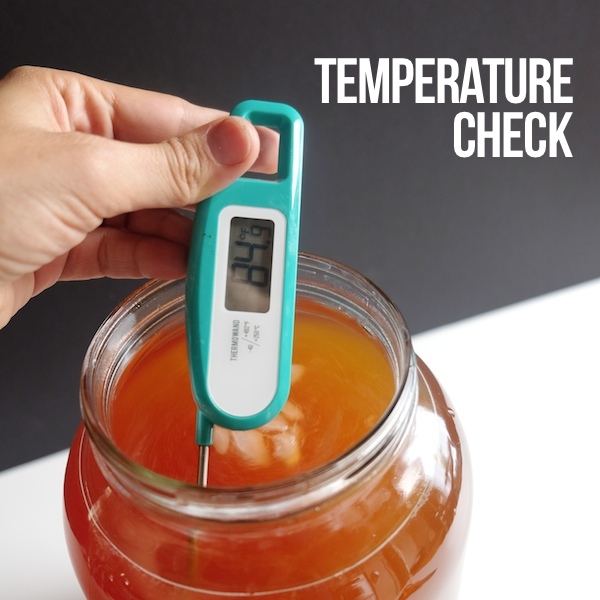
In goes the scoby. Always make sure you have clean hands when you’re working in the kitchen.
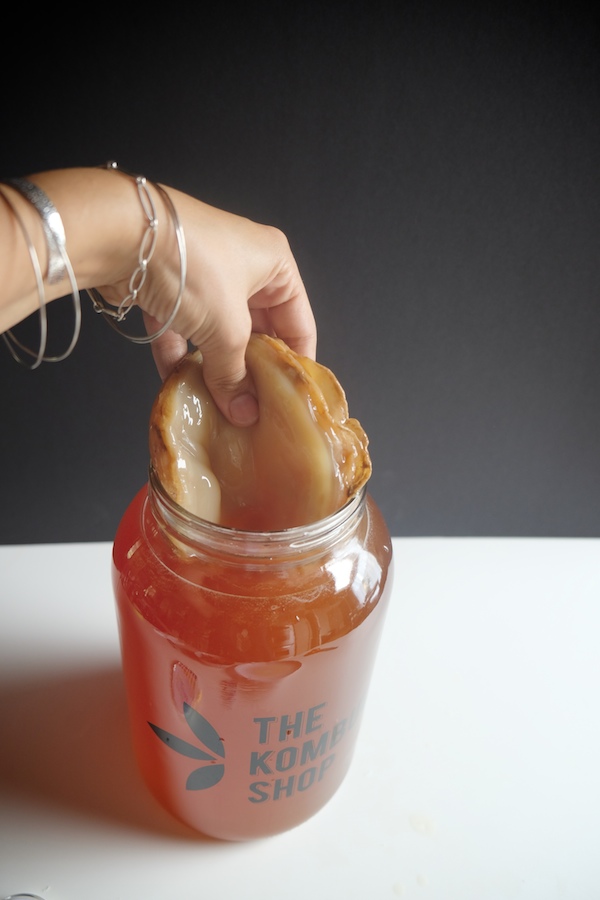
The pH Levels are super important to home brewing. We want to make sure that the tests read 4.5 or below.
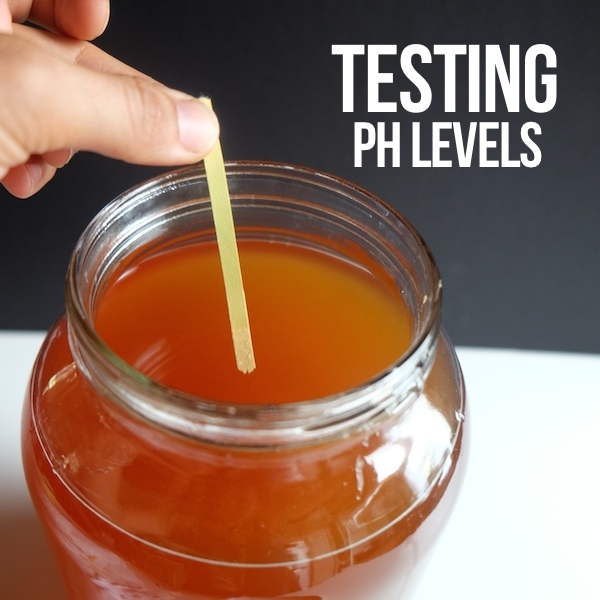
I like that the Kombucha Starter Kit came with test strips.
I, unfortunately, spilled kombucha all over them (did you know that I’m messy in the kitchen? Go figure…) so I bought this pH strip kit off of Amazon. I like it because it’s like a roll of tape and I only use as much as I need without getting kombucha all over it.
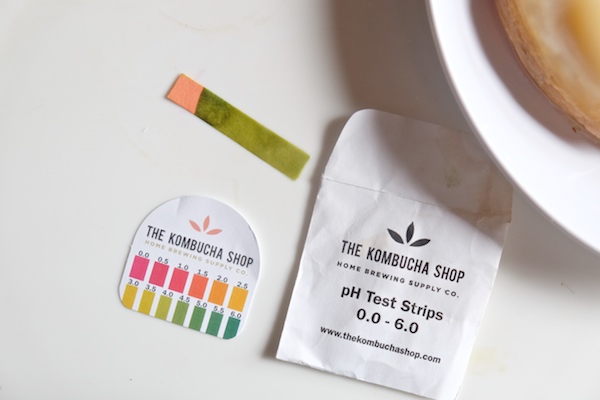
Now the kombucha goes off to a warm place (I put it on top of our fridge) for 7-10 days.
We put cheesecloth to allow airflow, but we also want to protect the kombucha from fruit flies (I have yet to see one).
Byeeeeeeee bucha! See ya real soon.
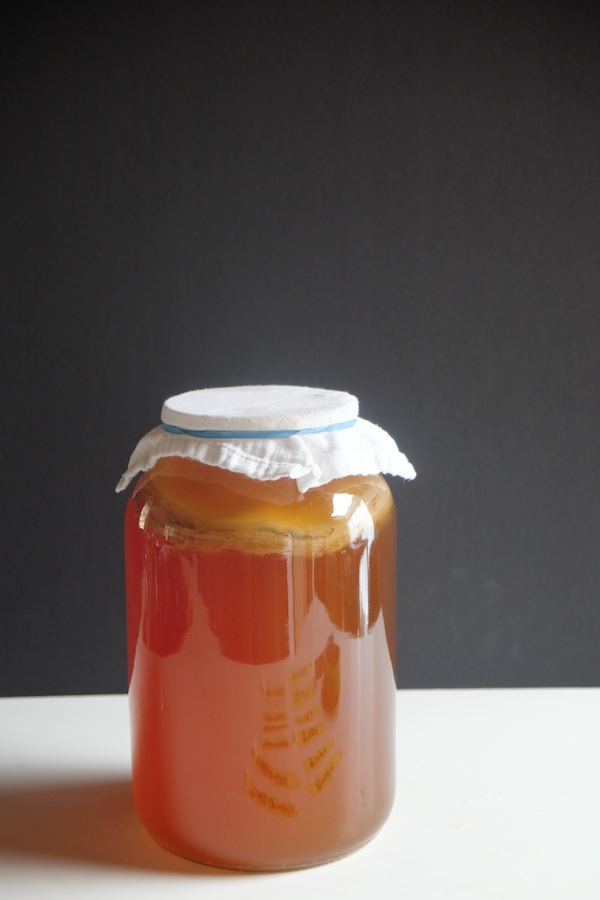

And we’re ready to bottle!
This is what’s involved in bottling—
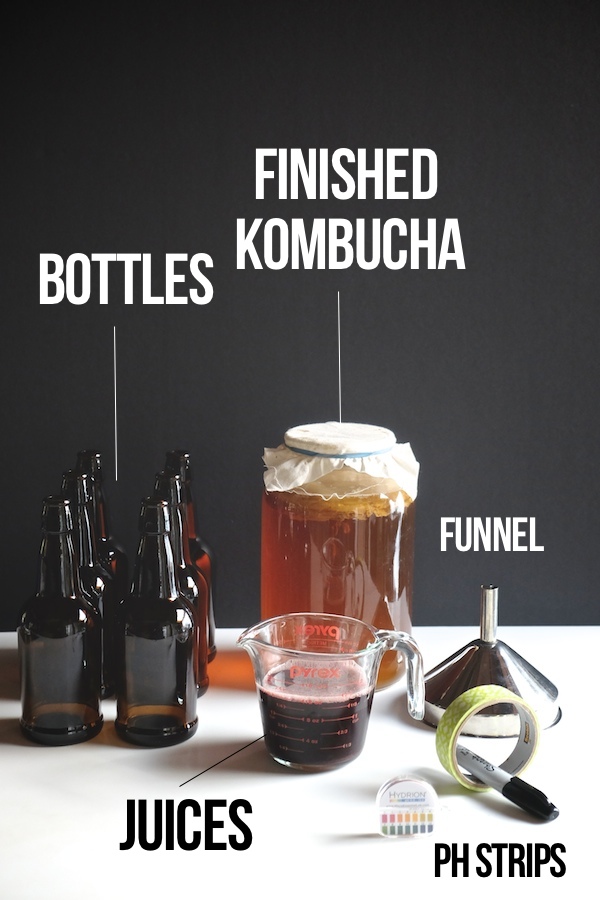
Bottles should always be clean. I like using amber bottles because you don’t see any of the scoby floating around. I think they also look pretty legit too! If you like seeing the color of your kombucha, give clear bottles a try.
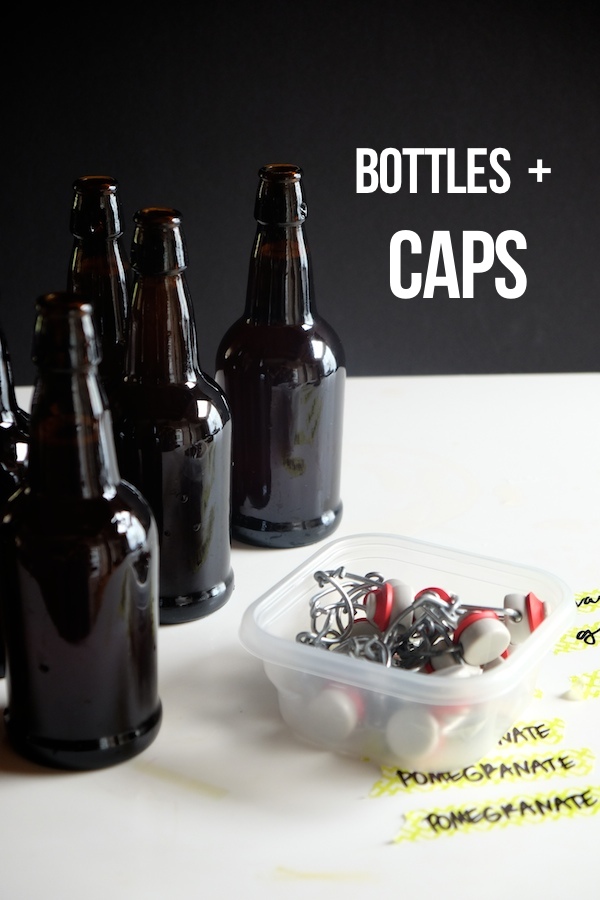
I love using this washi tape and a sharpie to label my kombucha.
Also, the pH strips are essential because you wanna make sure your bucha is ready to brew before you start.
Finished kombucha should be at a pH level range of 2.5-3.5.
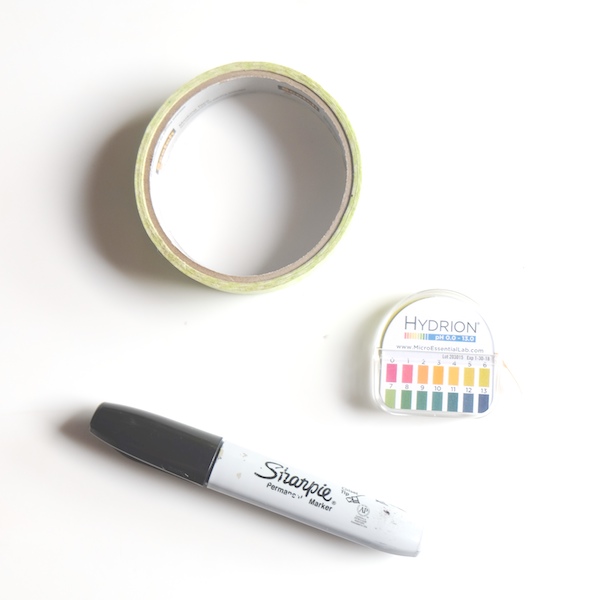
When I’m ready to start, I pour out 2 cups of the kombucha base to use in my next batch of kombucha.
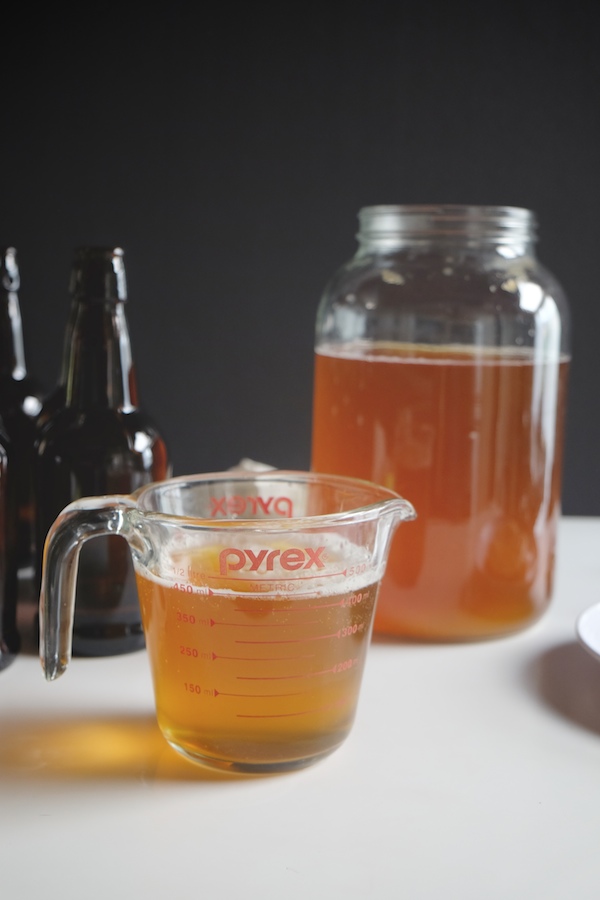
I put juice into the bottoms of all of the bottles. The juice I use is store-bought and I mostly buy organic juice. I like that I can control how much I put in. I usually end up putting 1/4 cup into each bottle.
I usually do this in the sink so I can avoid spilling all over my kitchen counter.
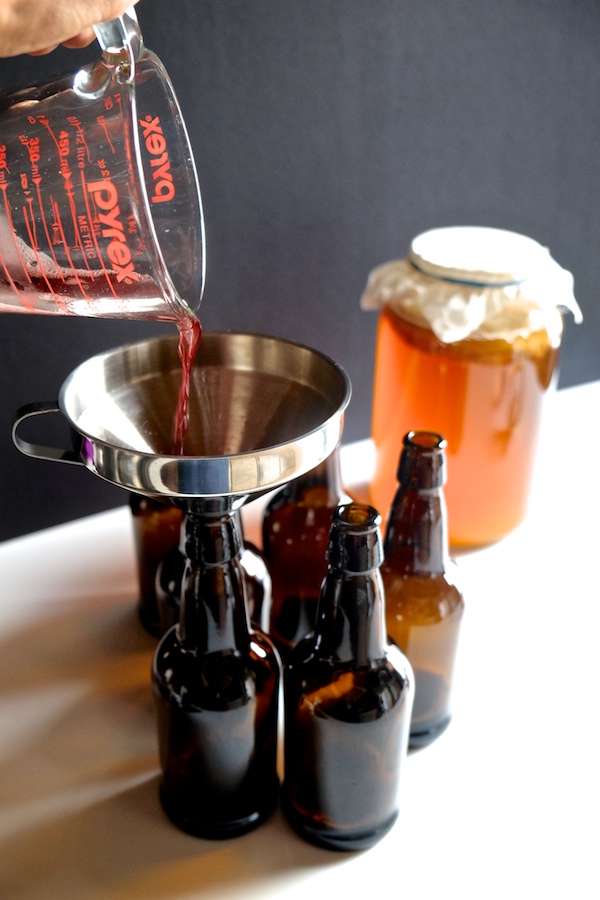
We follow with the kombucha. Sometimes I pour directly from the brew jar or I’ll transfer the kombucha into a pyrex measuring cup for better accuracy. Each bottle holds up to 16 oz.
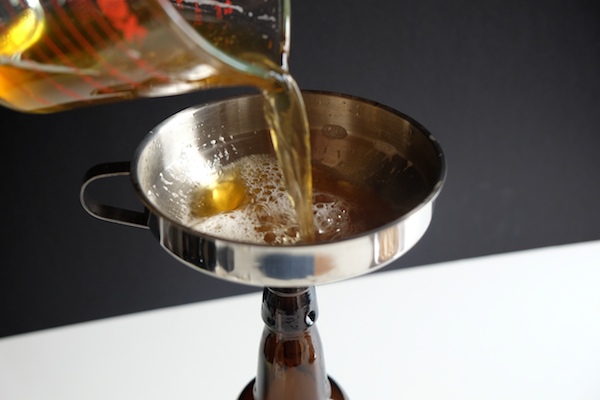
Lids get fastened.
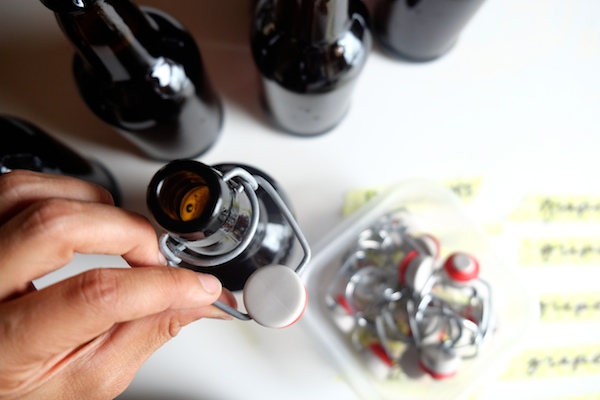
Labels get made. Make it fun. I like to mix my handwriting for extra flair.
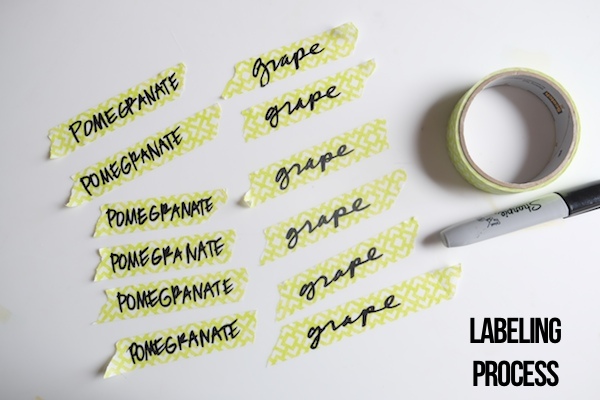
Now we have 6 bottles that need a day or two to ferment. This means it won’t be refrigerated until it’s ready. Then we pop the bottled kombucha in the fridge and they’re ready to go.
The kombucha in the jar goes on top of the fridge and we start this whole process again in about a week. Wednesday is brew day at my house and the whole process takes me 20-30 minutes.
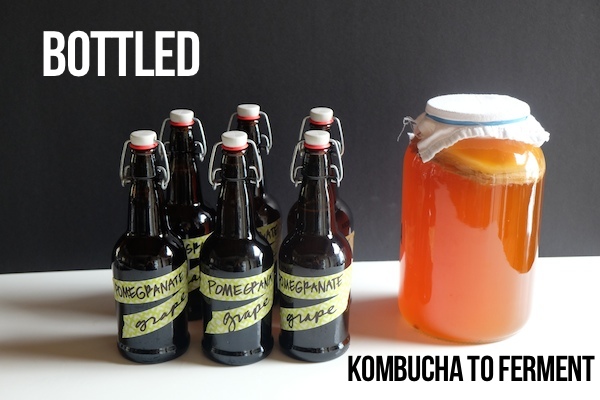
It’s nice having hand-labeled kombucha in my fridge.
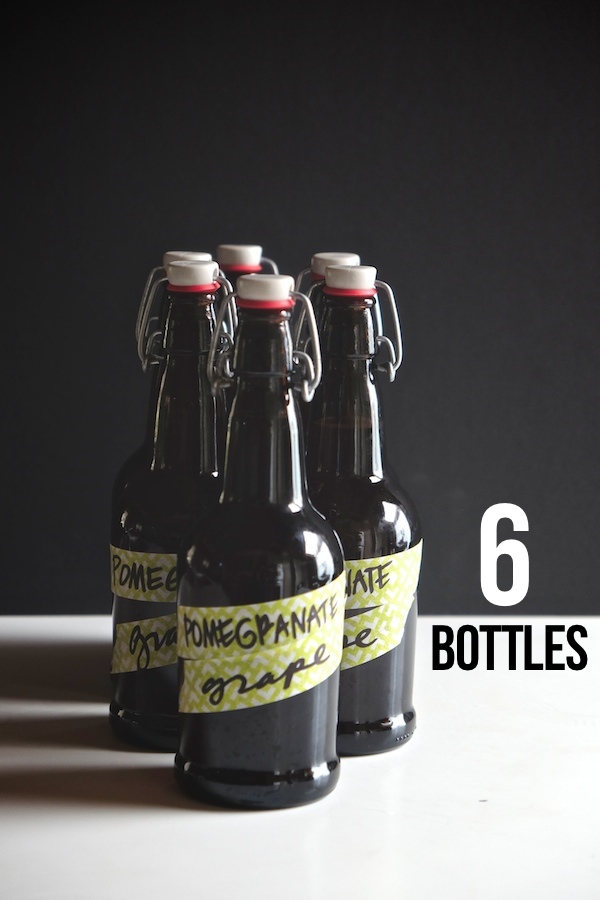
The fridge feels empty when I’m almost out. It’s cool though because there’s always another batch in progress!

- Mango
- Mango Ginger
- Mango Pineapple
- Mango Cherry
- Pineapple Ginger
- Pineapple Cherry
- Grape
- Pomegranate Grape
If you’d like to flavor your own, you can! After you have brewed your kombucha, add fruits to a jar and fill it up with the brew. Let it steep/infuse with the fruit for an additional 1-3 days until you achieve the flavor you desire. I like using juice because it makes the process quicker.

There are many resources out there to brewing your own kombucha. Through the process, I’ve referred to the following books & websites when I’ve needed to troubleshoot. The process is quite easy and I’ve had really good luck so far. Happy Brewing!
- How to Make Kombucha Tea at Home
- Make Your Own Scoby
- Ginger Kombucha
- Kombucha Revolution: 75 Recipes for Homemade Brews, Fixers, Elixirs, and Mixers
- True Brews: How to Craft Fermented Cider, Beer, Wine, Sake, Soda, Mead, Kefir, and Kombucha at Home
- Kombucha!: The Amazing Probiotic Tea that Cleanses, Heals, Energizes, and Detoxifies
[/donotprint]
Items you will need for brewing:
- 1 gallon glass brew jar
- 4 cups boiling water
- measuring cup
- organic kombucha scoby + 2 cups starter kombucha (use plain)
- 8 black teabags
- 1 cup organic sugar
- pH testing Kit
- thermometer
- cotton cover & rubber band (cheesecloth works)
- straw for tasting
Bring 4 cups water to a boil and pour into a large measuring cup. Add teabags and sugar and brew for 5-6 minutes. Give tea a good stir and make sure the sugar has dissolved. Remove teabags and pour tea into galloon brew jar. Fill the jar with cold filtered water, making sure to leave a good 3 inches of space at the top. The sweet tea solution should be in the temperature range of 68-88F. Add in the kombucha starter and the scoby. Give the mixture a good stir and test the pH levels with the test strips. The pH level should read 4.5 or below. If it does not, add 1 tablespoon of white vinegar and test again.
Cover the jar with cotton and secure with a rubber band. Jar should be kept in a warm place, out of direct sunlight with plenty of airflow. Do not move for 7 days.
After 7 days, you should see a new growth on your scoby. Dip a straw into the kombucha and test for doneness. Brew time can take 7-21 days depending on temperature. If the mixture is too sweet, add more time to your brewing process. If the mixture is too tart, adjust sweetness when bottling with additional juice. The finished kombucha should range 2.5-3.5 pH level wise.
Items you will need for bottling:
- measuring cup for juice
- 6 – 16oz. bottles
- funnel
- washi tape
- sharpie
- 1 1/2 cups organic juice to flavor kombucha (use any combination of juices)
- bottle brush– to clean out the bottles after each use
Reserve 2 cups freshly brewed kombucha for your next batch and set aside. Fill each of the 6 sterilized bottles with about 1/4 cup juice using a funnel. Continue filling each bottle with the brewed kombucha, making sure to leave about 1 inch empty space from the top. Seal each bottle and set kombucha aside in a dark area for one day to let the fermentation take place. Kombucha is now ready to drink. Transfer the bottles into the refrigerator. Kombucha will keep for up to one month.
Notes:
I’ve found that the longer you let your kombucha ferment, the more carbonated it becomes. If you open a bottle at room temperature you’ll see even more carbonation.












